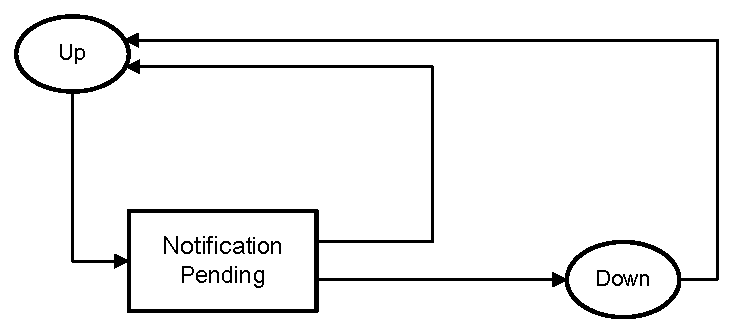The IP Manager uses a high-performance, asynchronous ICMP poller to send messages for use with IPv4 and IPv6. The ICMP poller uses two asynchronous threads; one thread sends polls, and the other receives polls. Because the send and receive threads operate separately, slow response times or excessive timeouts do not affect the polling rate. Thus, the ICMP poller performs at a consistent polling rate.
Possible states of an object during an analysis polling cycle shows the three possible states of a monitored object as determined by its response to an ICMP poll. The states are Up, Notification Pending, and Down.

An object is in the up state until it fails to respond to an ICMP poll. When it fails to respond, the status of the object changes to the Notification Pending state and stays in that state until the IP Manager can determine whether the object is Up or Down.
If the object responds to an ICMP poll before the maximum failure retry count is exceeded for the object, the status of the object changes back to the Up state.
If the maximum failure retry count is exceeded for the object, the status of the object changes to the Down state, and the IP Manager does not poll the object again until the next scheduled polling cycle. An object stays in the Down state until it responds to an ICMP poll. When the object responds, the IP Manager changes the status of the object to the Up state.
This polling sequence is performed for each IP endpoint that is managed.